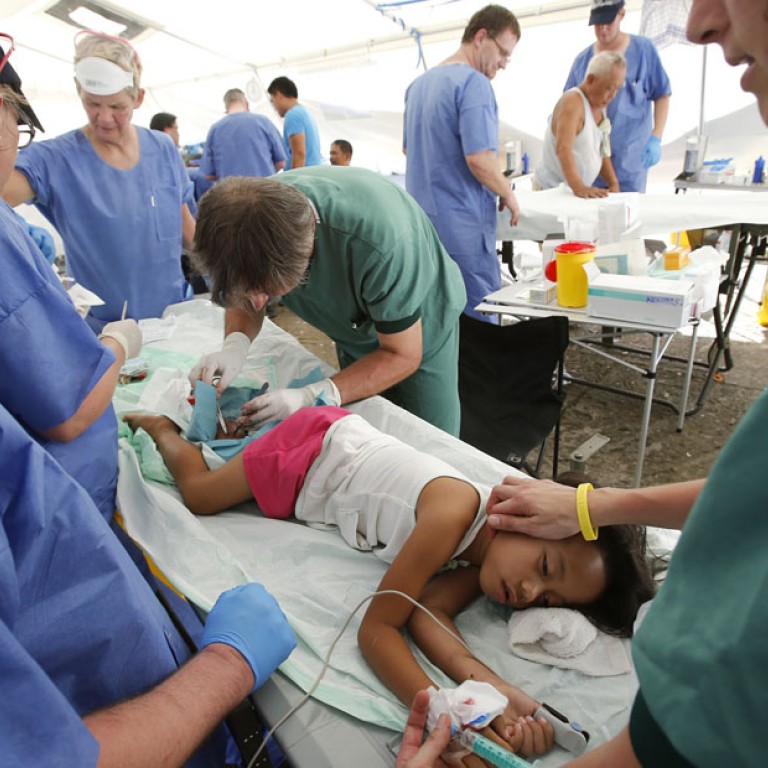
Help came far too late for some Philippine typhoon victims
A father died of a broken leg as antibiotics were not available to prevent infection of his wound
Richard Pulga lay on a hard steel gurney for five days with only a saline drip after being seriously injured in the typhoon that devastated his country.
On Friday, Pulga, 27, died - essentially of a broken leg.
Doctors said the father of two small children could have been saved. Instead, he became a victim of the incompetence and inaction that have plagued relief efforts in the Philippines for the hundreds of thousands left injured, homeless, hungry and increasingly desperate since the typhoon hit nine days ago.
By the time Dr Rodel Flores, the senior surgeon with a team of visiting doctors, found Pulga on Thursday, he had received no antibiotics and his leg was badly infected. The doctor ordered an emergency amputation to try to save his life. But it was too late.
"In short," Flores said, "it was preventable."
Pulga was one of the first victims of typhoon Haiyan to be brought to the top government hospital in Tacloban city. He was there because he had tried to protect his home, sending his wife and children to a safer place as some of the highest winds ever recorded slammed into Leyte island. Those winds sent a coconut rocketing through the darkness into his leg, shattering it.
His death is one of the clearest signs yet of the human toll taken by a slow and troubled relief effort since Super Typhoon Haiyan swept ashore. Like much-needed water and food, medicine - including antibiotics - was held up for days as rescue teams struggled to operate amid the chaos of a city with too few soldiers to provide security and too little government control.
Aid workers huddled for days in the airport, fearful of venturing out amid reports of sporadic gunfire and after at least one convoy was raided by desperate people. Some of those workers have since said the inadequate government response has made this disaster more difficult in some ways than the far deadlier Indian Ocean tsunami in 2004.
By yesterday, survivors were rebuilding homes and emergency supplies were flowing into ravaged islands. But the aid effort remained generally patchy.
The National Disaster Risk Reduction and Management Council put the official death toll at 3,633. Another 1,179 people were listed as missing and nearly 12,500 injured.
The UN reported that 4,460 had been confirmed dead, and said yesterday that the number of people made homeless by the storm had risen to 1.9 million, up from 900,000.
The New York Times, Reuters

